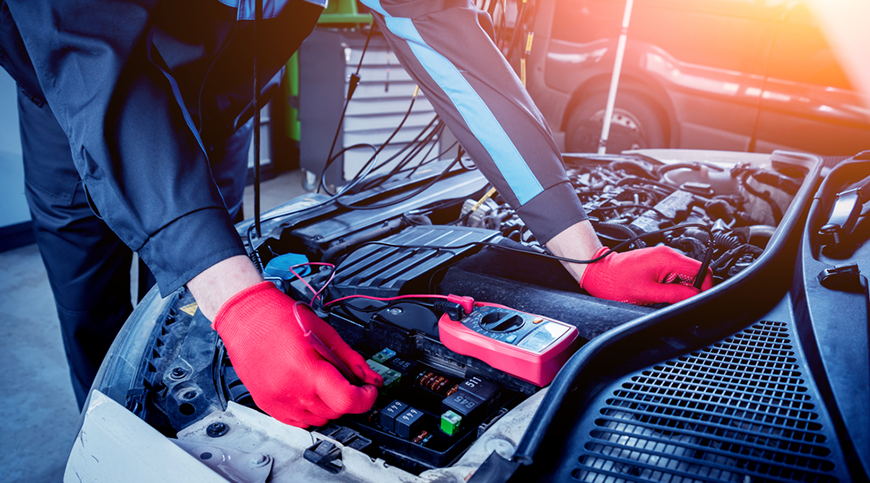Electricity of cars
Electricity of cars
The power of the car depends entirely on the battery, which is a kind of batteries that can be recharged once again to start the electric motor that runs the internal combustion engine, whether it works with diesel or diesel and there is another type of newly appeared to operate the entire car without the need for fuel
The regular battery consists of 6 cells of conductive galvanic cells respectively. Each of which produces 2.1 volts and the delivery is 12.6 volts when fully charged. The normal car used to start the car is usually a 12 volt lead battery. In this article, we offer you Dear reader, detailed information about the electricity of cars and everything that will make the wallet on your car from any failures.
Examination of the battery
The battery is the first provider of the vehicle so it must be examined well, and the examination is as follows:
The initial test (for a battery that does not require maintenance) is to examine the green eye of the battery with a glass indicator.
Clean the eye with a piece of cloth to read it clearly. The eye is the visible part of an internal battery hydrometer to measure the concentration of the solution; it contains a green ball that floats up when the battery is good (over 75% charged). If the drive starter and the eye are not dark, indicate that the battery is empty, measure it with a voltmeter. Step 2. Transparent or yellow indicates the low level of the solution; in this case the battery needs to be replaced. For non-wired batteries with removable covers, test the solution by hand hydrometer, add distilled water if needed.
Battery measurement
First: Measure the battery effort without carrying. Connect the voltmeter to measure the car with the battery poles. The black wire is connected to the negative pole (-) and the positive red wire (+) If the voltmeter reading is less than 12 volts, charge the battery. In case the meter reading is 12 volts or more the battery is performed on the load test.
Brighten the high headlights, the heating system and the warning lights for 15 seconds.
Read the meter and the lights are still lit, the reading should be at least 9.5 volts; if you do not get that value, charge the battery.
Generator Power Supply
It works to generate electricity and also works to recharge energy
Cars use two types of generators
– Separate feeding generators which are electrodes through which the constant current flows
Self-feed generators are dependent on the magnetic field in their poles
Fuel Supplier
Carburetor, the vehicle’s fuel supply, generates electrical charges that make the engine feel ready to work
The start of the movement and operation
Once the car key is fully turned on, it is fully prepared to move, resulting in a driving force that affects the torque of the vehicle, to complete the complete combustion process, by fuel, and air impact, so that the car is ready to move from place to place.



